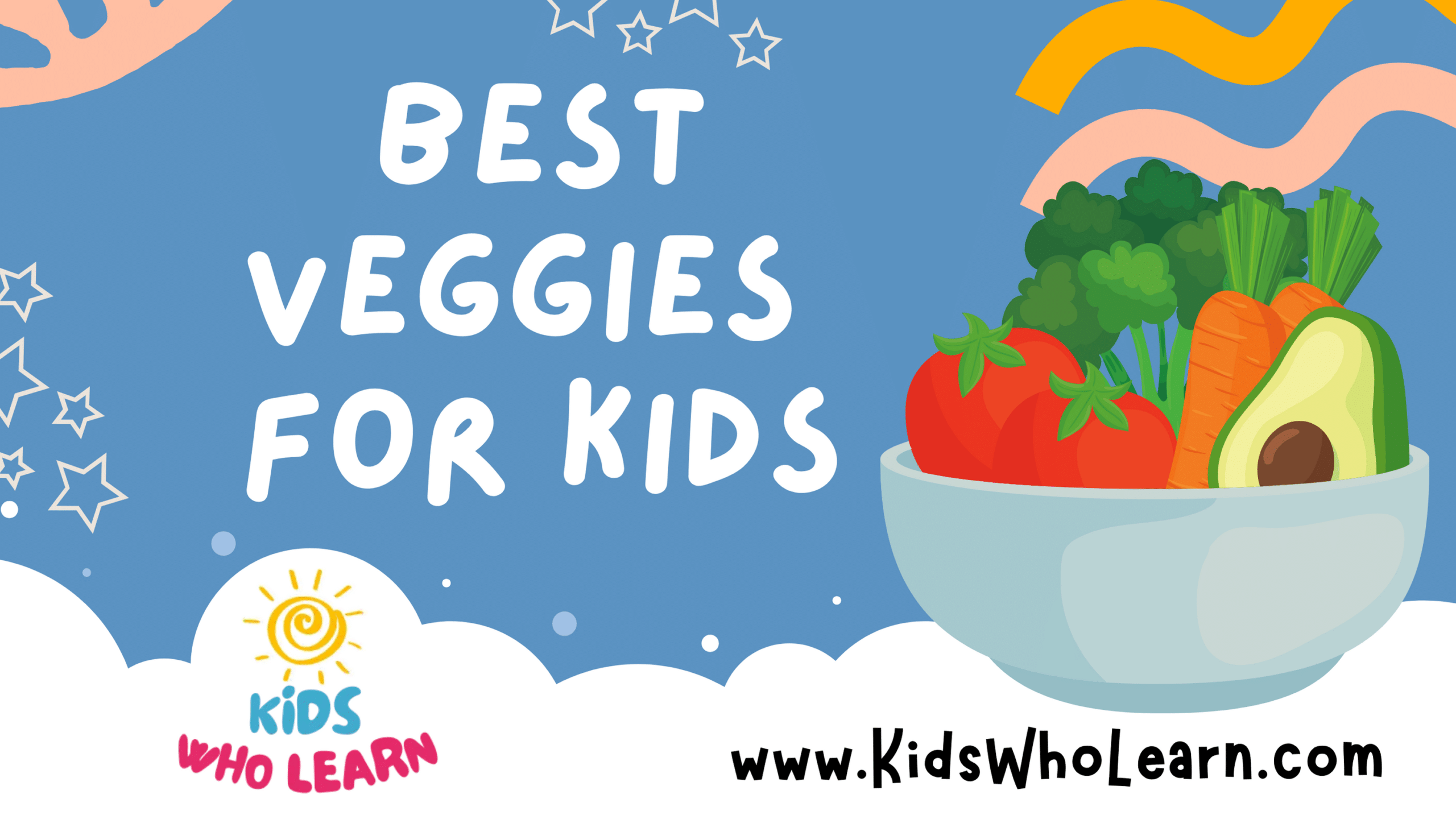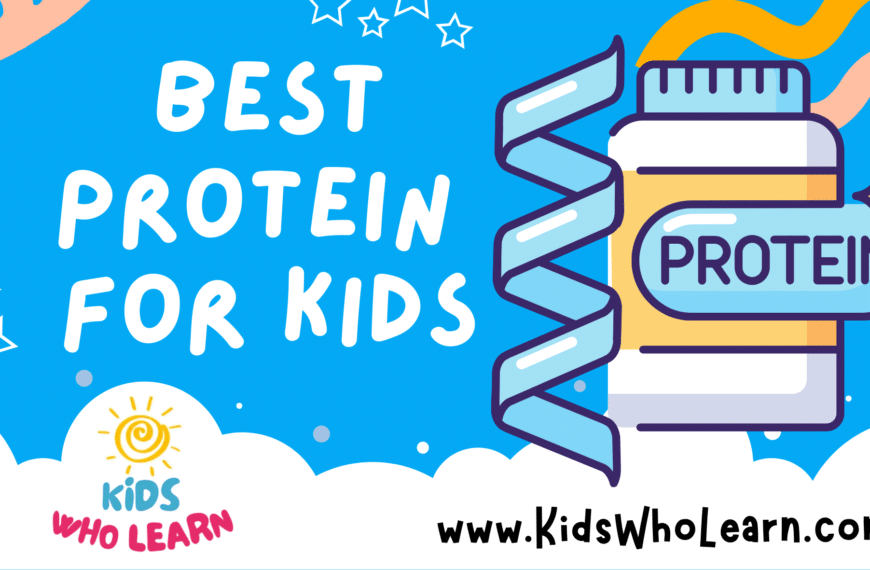Introducing children to a variety of vegetables is crucial for building a foundation for healthy eating habits. Vegetables are packed with essential nutrients that support a child’s growth and development. With the plethora of vegetable options available, understanding which ones are the best for children can be a vital aspect of meal planning for parents and caregivers. Choosing vegetables that are not only nutritious but also appealing to young palates ensures that kids receive the benefits of these important food groups.
While each child’s preferences and nutritional needs are unique, there are certain vegetables that tend to be more universally accepted by young eaters. From the sweetness of bell peppers to the mild flavor of fresh cucumbers, it’s possible to offer a range that caters to varied tastes. Preparing these vegetables in fun and creative ways can further encourage kids to enjoy their greens. Equally important is creating a positive environment around mealtime, where children feel encouraged to try new foods without pressure.
Safety is also key when incorporating new vegetables into a child’s diet. Parents should be mindful of potential choking hazards and allergic reactions, introducing new veggies in small, manageable pieces and monitoring their children’s responses. Considering nutritional alternatives is important as well, ensuring that children with specific dietary needs still receive a well-rounded intake of vitamins and minerals.
Key Takeaways
- A diverse selection of vegetables nourishes children’s growth and caters to their taste preferences.
- Creative preparation and a positive mealtime environment encourage vegetable consumption.
- Safety considerations and attention to dietary needs are essential when introducing new vegetables to kids.
Understanding Nutritional Needs for Children
Children have unique nutritional needs to support their growth and development. It’s important that you provide them with a balanced diet rich in the essential vitamins and minerals they need.
Essential Vitamins and Minerals for Growth
Your child requires a variety of vitamins and minerals to support bone health, strong immunity, and overall growth. For instance, vitamin A is crucial for eye health, while vitamin C supports the immune system and helps in the absorption of iron. It is important to include vegetables that are high in these nutrients, such as carrots for vitamin A and broccoli for vitamin C. Calcium and vitamin D are vital for developing strong bones, and can be found in leafy greens like kale and spinach.
Iron is another key mineral, particularly for children in their adolescence, as it assists in proper brain development. You can find iron in foods like spinach and legumes. The USDA recommends a variety of vegetables to ensure children get a wide range of nutrients.
Suitable Vegetable Serving Sizes for Different Ages
The quantity of vegetables your child should consume can vary based on their age, health, and activity level. Below is a table based on USDA guidelines showing suitable vegetable serving sizes for different ages.
| Age Group | Daily Vegetable Serving Size |
|---|---|
| 2-3 years | 1 cup |
| 4-8 years | 1.5 cups |
| 9-13 years (girls) | 2 cups |
| 9-13 years (boys) | 2.5 cups |
| 14-18 years (girls) | 2.5 cups |
| 14-18 years (boys) | 3 cups |
Remember that these are general guidelines and the actual serving size should be adjusted to meet your child’s individual needs and appetite. Introducing a variety of vegetables early on can help establish healthy eating habits for life.
Selecting Vegetables for Kids
When choosing vegetables for kids, focus on those that are vibrant and tasty, high in fiber for digestive health, naturally sweet with mild flavors, and rich in iron and other nutrients to maintain their energy levels.
Colorful and Engaging Vegetables
Offering a variety of colorful vegetables can make meals visually appealing to children. Brightly colored veggies such as red bell peppers, purple carrots, and yellow sweet corn are not just pleasing to the eye but also packed with essential vitamins and minerals.
- Red bell peppers: High in vitamin C and A, great for immunity and vision.
- Purple carrots: Contain anthocyanins which are beneficial antioxidants.
- Yellow sweet corn: Offers a natural sweetness that appeals to children.
High-Fiber Vegetables for Digestive Health
Vegetables rich in fiber are crucial for maintaining proper digestive health in kids. Including options such as broccoli and peas in your child’s diet can help regulate their digestive system.
- Broccoli: A source of fiber and also provides vitamin C and K.
- Peas: Fiber-rich and contain protein, aiding in fullness and nutrient supply.
Sweet-Tasting and Mild-Flavored Veggies
Kids are often drawn to sweet flavors and less intense tastes, making certain vegetables more palatable for them. Carrots and sweet potatoes are excellent choices due to their natural sweetness and mild flavors.
- Carrots: Naturally sweet, perfect raw or cooked, and a good source of beta-carotene.
- Sweet potatoes: Have a creamy texture, mild flavor, and are rich in vitamin A.
Iron-Rich Vegetables for Energy
Incorporating iron-rich vegetables helps ensure that kids have the necessary energy to stay active throughout the day. Spinach and Swiss chard are dark green vegetables that are a good source of iron.
- Spinach: Can be added to smoothies or as a fresh salad component and is high in iron.
- Swiss chard: Another dark green vegetable that is versatile and iron-packed.
Preparing Vegetables Kids Will Love
To win over young palates, it’s essential to present vegetables in enticing and varied forms. By combining fun recipes, tasty snacks, and stealthy methods, you can make vegetables a favorite on your child’s plate.
Fun and Creative Vegetable Recipes
Experiment with vegetable recipes specifically designed for kids to spark their interest. Broccoli tots, a playful twist on traditional tater tots, can be a hit. Simply mix finely chopped broccoli with bread crumbs, beaten eggs, and cheese, shape them into tots, and bake until golden brown. Another sought-after dish is roasted cauliflower. Cut cauliflower into bite-sized pieces, toss with olive oil and your child’s favorite seasonings, and roast for a flavor-packed side dish.
Vegetable Snacks and Finger Foods
Healthy snacks are crucial for kids. Offer vegetable sticks with beet hummus for a colorful and nutrient-dense option. To add excitement, cut vegetables into various shapes with cookie cutters. Baby-led weaning enthusiasts might appreciate steamed carrot sticks or green beans, perfect for tiny hands to grasp.
- French fries alternative: Try baking veggie fries made from carrots, parsnips, or sweet potatoes.
- Crunchy option: Kale chips can be a surprising favorite—just tear kale leaves, drizzle with a bit of oil, sprinkle with salt, and bake.
Incorporating Vegetables into Familiar Dishes
Kids often prefer familiar foods. Enhance pasta and rice dishes by adding chopped vegetables. Stir peas into rice or fold spinach into lasagna. Broccoli cheddar soup combines the well-loved creamy cheese flavor with the nutritional benefits of broccoli and can serve as a complete meal.
- Pasta dishes: Add pureed butternut squash into mac and cheese for a nutrition boost.
- Rice meals: Mix in finely diced carrots and bell peppers for extra color and crunch.
Hiding Vegetables in Meals for Picky Eaters
Sneaking veggies into meals can help satisfy picky eaters. Puree vegetables like zucchini, squash, or sweet potatoes and incorporate them into sauces or batters. This can be an effective method for making healthier versions of frequently requested foods without drastically altering the taste or texture.
- Favorite foods: Blend spinach into brownie batter, or mix pureed pumpkin into pancake mix.
- Soup strategy: Pureed carrots or butternut squash can thicken soups while adding nutrition.
Using these strategies, you can successfully introduce more vegetables into your child’s diet and make mealtime a fun, nutritious, and stress-free experience.
Fostering Healthy Eating Habits
To cultivate a love for vegetables in children, it is essential to actively involve them in food choices and demonstrate a genuine enjoyment of these nutritious options.
Engaging Children in Veggie Selection and Preparation
Involve your children in the process of picking out vegetables, whether it’s at the grocery store or in the garden. Allow them to select veggies that appeal to them, which can pique their interest and willingness to try something new. During meal prep, encourage them to wash and arrange veggies, transforming it into a fun learning activity. This hands-on experience can enhance their curiosity and makes them more likely to enjoy the food they helped create.
- Choose together: Shop or grow a variety of colors and shapes to make selections appealing.
- Prep together: Simple tasks like snapping beans or stirring a salad include them in the process.
Teaching by Example: Modeling Enjoyment of Vegetables
Your own behavior is a powerful teaching tool. When children see you enjoying a wide range of vegetables, they’re more likely to mimic this behavior and develop a taste for them. Consistently include vegetables in your meals and express your enjoyment openly.
- Eat together: Share meals where everyone eats the same veggies.
- Express enjoyment: Use positive language to describe the taste and texture of vegetables.
Introducing a Variety of Vegetables Early On
Introduce an assortment of vegetables to young children, including as baby food, to acclimate their taste buds to different flavors. This early variety lays the foundation for a healthy palate. Don’t give up if they initially reject certain veggies; it often takes multiple exposures before a child will accept a new food.
- Start early: Offer different vegetable-based baby foods.
- Persist gently: Re-introduce rejected vegetables without pressure, as tastes may change.
Most Recommended Vegetables for Kids
When choosing vegetables for your kids, it’s important to opt for those rich in nutrients while still being palatable to younger taste buds. Carrots are a hit for their natural sweetness and crunch, ideal for snacks or as a side dish. They’re high in vitamin A, which is vital for eye health.
Broccoli and spinach are excellent choices packed with vitamins, such as vitamin C and iron, which are crucial for growing bodies. Broccoli can be steamed and flavored with a dab of butter, while spinach can be incorporated into smoothies or omelets to mask its taste.
For those with a sweet tooth, sweet potatoes and butternut squash are nutrient-dense options that can be mashed or baked. These veggies are filled with vitamin A and fiber. Green beans and peas are also favorable; they can be lightly seasoned and mixed with other foods for an additional nutrient boost.
| Vegetable | Preparation Idea | Nutrient Highlight |
|---|---|---|
| Cucumber | Sliced raw for snacks | Hydration, vitamin K |
| Bell peppers | Raw strips with dip | Vitamins A, C, and E |
| Cauliflower | Roasted with olive oil | Vitamin C, choline |
| Corn | On the cob or kernels in salads | Fiber, B vitamins |
| Avocado | Mashed as a spread or in smoothies | Healthy fats, fiber |
Brussels sprouts and asparagus may be more challenging to introduce, but roasting them can enhance their flavors, making them more appealing. And let’s not forget about kale; when baked into chips, it can become a kid-friendly snack.
Remember to keep portions suitable for a toddler’s appetite. Introducing a variety like crisp romaine lettuce, versatile mushrooms, or crunchy jicama encourages healthier eating habits. Cucumbers and celery can be fun with toppings or dips like honey or yogurt to entice little ones.
Lastly, lettuce and avocado can be mixed into salads or sandwiches for older kids who might appreciate a variety of textures and flavors. With these veggies, you’re not just serving them food—you’re boosting their lifelong health and eating habits.
Safety and Considerations When Introducing New Veggies
When you introduce new vegetables to kids, it is essential to consider their safety and ensure the food is appropriate for their developmental stage. Monitoring their reactions can prevent health complications and tailor the experience to their growing needs.
Monitoring for Allergic Reactions
You should observe your child closely for any signs of allergic reactions when trying a new vegetable. Common symptoms include hives, rashes, itching, or difficulty breathing. Here’s a quick reference to track potential allergens:
- Keep a food diary: Note the introduction of new vegetables and any adverse reactions.
- Introduce one vegetable at a time: This makes identifying allergens easier.
- Wait a few days: Allow 3-5 days before adding another new vegetable to their diet.
Vitamin C and antioxidants are beneficial for your child’s health but introduce them with care to monitor tolerance.
Appropriate Textures for Different Developmental Stages
Your child’s age and development significantly influence the appropriate textures of vegetables to prevent choking hazards. Here is a guideline for vegetable textures:
| Age Group | Texture Description |
|---|---|
| 6-8 months | Well-cooked, pureed, or mashed vegetables |
| 9-12 months | Soft-cooked, very finely chopped |
| Over 12 months | Soft-cooked, bite-sized pieces |
- Avoid seasoning with salt: Young children are sensitive to salt, and it’s not necessary for flavor at a young age.
- Soft textures: For younger children, ensure veggies are soft enough to be mashed with gentle pressure.
By adhering to these guidelines, you can ensure that the vegetables you introduce to their diet are both safe and beneficial for their development.
Additional Tips for Enhancing Vegetable Appeal
Making vegetables appealing to kids requires creativity and an understanding of what attracts them. Natural sweeteners, eye-catching plating, and interactive learning can all play a role in making veggies a favorite on their plates.
Using Natural Sweeteners and Seasonings
To enhance the flavor of vegetables without adding excessive sugar or artificial additives, consider using natural sweeteners like honey or agave nectar. These sweeteners can be especially effective when combined with carrots or sweet potatoes, which have a natural sweetness that is heightened by a light glaze. A table of seasoning suggestions is outlined below:
| Vegetable | Seasoning | Optional Sweetener |
|---|---|---|
| Carrots | Cinnamon | Honey |
| Sweet Potatoes | Nutmeg | Maple Syrup |
| Butternut Squash | Clove | Brown Sugar |
When it comes to savory flavors, explore adding herbs and spices to showcase different flavor profiles that can make the veggies more interesting.
Presentation and Plating for Visual Attraction
Children are often attracted to meals that are visually appealing. Utilize color to create a vibrant and enticing plate. Here’s a brief list of how you might plate vegetables to maximize their appeal:
- Rainbow Carrots: Slice various colored carrots and arrange them in a pattern.
- Broccoli Trees: Present broccoli florets as miniature trees standing in a landscape of other veggies.
- Bell Pepper Boats: Cut bell peppers into boat-like shapes and fill them with a medley of finely chopped veggies.
Educational Activities Related to Veggies
Integrate vegetables into learning activities to pique children’s curiosity. You could:
- Create a veggie color wheel: This helps children understand the variety of colors in vegetables.
- Grow a garden: Whether in a backyard or a small pot, let kids plant and watch their veggies grow.
By applying these tips in your approach to feeding kids vegetables, you can turn mealtime into an enjoyable and flavorful experience.
Nutritional Alternatives for Specific Dietary Needs
When considering vegetables for children, it’s important to address specific dietary requirements and offer alternatives that align with health needs, including antioxidant-rich options and sources of vitamin C.
Substitutes for Common Allergens
Children with allergies need safe options. For allergens like nuts, seeds like pumpkin or sunflower can be a good alternative, offering similar textural contrast in meals. If soy is the issue, leafy greens like spinach provide an alternative source of nutrients without the allergenic proteins. Spinach is rich in antioxidants and a good source of vitamin C.
- Spinach (Vitamin C, Antioxidants)
- Pumpkin Seeds (Magnesium, Zinc)
Vegetable-Based Alternatives to Animal Products
If you’re seeking vegetable-based alternatives to animal products, there are several options that maintain a high nutrient profile. For instance, broccoli and Brussels sprouts are excellent choices; they are packed with vitamins, including vitamin C, and have antioxidant properties that support your child’s health.
- Broccoli (Vitamin C, Fiber)
- Brussels Sprouts (Vitamins A and C, Fiber)
Frequently Asked Questions
Selecting the right vegetables for your child is crucial for their growth and health. Here we address common questions to help you make informed choices.
What are some nutrient-dense vegetables for a child’s optimal growth?
For optimal growth, children can benefit from vegetables like spinach, broccoli, and sweet potatoes. These are packed with essential vitamins and minerals supporting overall development.
What types of steamed vegetables are most suitable for toddlers?
Steamed carrots, peas, and green beans are ideal for toddlers. They are soft enough for little ones to eat and retain most of their nutrients through the steaming process.
How can parents introduce vegetables to children with a strong dislike for them?
Introduce vegetables in a fun and engaging way by involving your child in cooking. You may also blend vegetables into sauces or smoothies to mask their flavor.
Which vegetables serve as the best snacks for children’s lunchboxes?
For lunchbox snacks, opt for cherry tomatoes, cucumber slices, and baby carrots. They are convenient, tasty, and full of nutrients that are essential for your child’s health.
What are child-friendly recipes that cleverly incorporate vegetables?
Try recipes like vegetable lasagna, zucchini muffins, or cauliflower pizza crust. These disguise the vegetables while still providing the nutritional benefits.
How can one ensure a balanced vegetable intake for an extremely picky eater?
Ensure a balanced intake by mixing vegetables with your child’s favorite foods, offering small portions of new veggies, and by not giving up after the first try—taste buds can take time to adapt.














